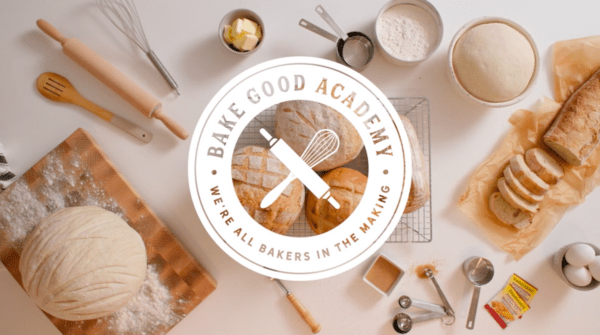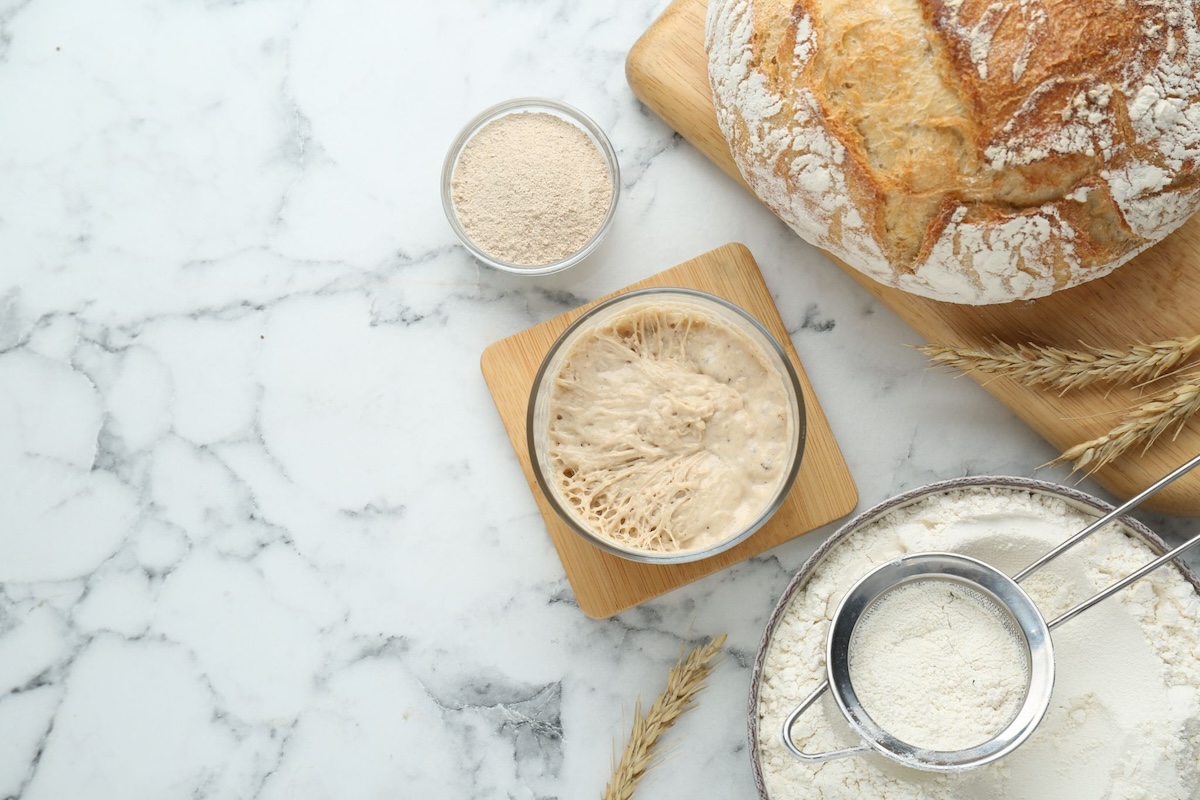April 1st is National Sourdough Bread Day. While many home bakers have mastered the art of baking fresh bread, the team at Fleischmann’s want to spread the message that making sourdough bread doesn’t have to be as daunting as it seems. The unique flavour of sourdough bread is certainly one that is worth the extra steps.
Sourdough has a reputation for being a more challenging bread to make from scratch because it relies on a “starter.” Despite sourdough sharing a day with April Fool’s, it’s no joke when I say that thanks to Fleischmann’s and BakeGood.ca, making sourdough bread at home isn’t that difficult after all!

Fleischmann’s wanted to take the fear and confusion out of baking when they created BakeGood.ca. One of the ways they’re tackling this challenge is through their Bake Good Academy, a video series hosted by accomplished Canadian bakers, chefs, baking enthusiasts and influencers. Featuring lessons for beginners through expert bakers, topics cover a variety of essential baking skills.
Sourdough Starter
Courtesy of BakeGood.ca
Ingredients:
● 2 cups all-purpose flour
● 1 (2-1/4 tsp.) envelope Fleischmann's® Traditional Yeast
● 2 cups warm water (100° to 110°F)
Directions:
1. Combine flour and undissolved yeast, In large plastic, ceramic or glass bowl (dont use
metal). Gradually add warm water to flour mixture and beat until smooth. (Batter may
be stiff, but will relax as it ages or when brought back to room temperature after
refrigeration.) Cover with a cloth towel or cheesecloth; let stand in warm place until
mixture is bubbly and sour-smelling, about 2 to 4 days. Starter may darken, but if it
changes to another color, discard and start over. Transfer to a 2-quart or larger plastic
container with tight-fitting lid. Refrigerate until ready to use.
2. To keep starter alive: Once a week, stir in equal amounts of all-purpose flour and
warm water (100° to 110°F). Beat until smooth. Cover with a cloth towel or
cheesecloth and let stand in warm place until mixture is bubbly and sour-smelling,
about 12 to 24 hours. Use immediately or cover tightly and refrigerate until ready to
use.
3. To replenish the starter: Add equal amounts of all-purpose flour and water (100° to
110°F) to the remaining starter. (For example, for every 1 cup of starter removed,
replenish with 1 cup flour and 1 cup water.) Beat until smooth. Cover with a cloth
towel or cheesecloth and let stand until bubbly, 12 to 24 hours. Use immediately or
cover tightly and refrigerate until ready to use.
TIP: To achieve a stronger sourdough flavour in recipe, allow sourdough starter to ferment 4
to 6 weeks.
VARIATION: For a whole wheat starter, substitute the all-purpose flour with 100% whole
wheat or a 50-50 blend of all-purpose and whole wheat flour. Starter will appear beige in
colour and have a brown layer of liquid instead of clear. Please note that the 50-50 blend
will provide more sourdough flavour in the finished product than the 100% whole wheat
starter.
Sourdough Bread
Courtesy of BakeGood.ca
Ingredients:
● 1-1/2 cups sourdough starter
● 4 to 5-1/4 cups bread OR all-purpose flour* (may also substitute up to 2 cups with
whole wheat flour)
● 1 (2-1/4 tsp.) envelope Fleischmann's® Traditional Yeast OR Fleischmann's® Quick Rise
Yeast
● 1-1/2 teaspoons salt
● 1 cup water
● Cornmeal
Directions:
1. Stir sourdough starter before measuring. Measure out 1-1/2 cups sourdough starter and
bring to room temperature.
2. Make the dough
a. Traditional Active Dry Yeast method: Combine 2 cups flour and salt in a large
mixer bowl. Combine yeast and 1 cup warm water (100° to 110°F) in a small
bowl for 10 minutes. Add yeast and starter to flour mixture, beat 2 minutes at
medium speed of electric mixer, scraping bowl occasionally. Beat 2 minutes at
high speed. With spoon, stir in enough remaining flour to make soft dough.
Knead on lightly floured surface until smooth, about 8 to 10 minutes. Place in
greased bowl, turning once to coat top. Cover; let rise in warm draft-free place
until doubled in size, 30 to 60 minutes. Punch dough down. Proceed with
shaping and baking directions below.
b. Quick-Rise Yeast method**: Combine 2 cups flour, undissolved yeast and salt in
a large mixer bowl. Add water (120° to 130°F) and starter to flour mixture;
beat 2 minutes at medium speed of electric mixer, scraping bowl occasionally.
Beat 2 minutes at high speed. Stir in enough remaining flour to make soft
dough. Knead on lightly floured surface until smooth, about 8 to 10 minutes.
Cover dough and let rest 10 minutes.
3. Shaping and Baking (Both Methods): Remove dough to lightly floured surface, divide in
half. Roll each half to 12 X 9-inch rectangle. Beginning at long end, roll up tightly.
Pinch seams and ends to seal. Taper ends by gently rolling back and forth. Place, seam
sides down, on a large greased baking sheet sprinkled with cornmeal. Cover; let rise in
warm draft-free place until doubled in size, about 30 to 45 minutes.
4. With sharp knife, make 4 or 5 diagonal slashes (1/2-inch deep) across top of each loaf.
Bake at 400°F for 35 to 40 minutes or until done. For crispy crust, spray loaves with
water just before baking and every 5 minutes during the first 10 minutes of baking
time. Remove from baking sheet; let cool on wire rack.
*The amount of flour needed varies according to the consistency of the starter.
**While Quick-Rise Yeast can be successfully used, for best sourdough flavour we recommend
using Traditional Active Dry Yeast for this recipe.
To make round loaves: Divide dough in half. Shape each half into 5-inch ball. Place on large
greased baking sheet sprinkled with cornmeal. Cover; let rise in warm, draft-free place until
doubled in size, about 30 to 40 minutes. With sharp knife, make 4 slashes (½-inch deep) in
criss cross fashion on top of each loaf. Spray with water and bake as directed.
Variation: Replace ¾ cup water with ¾ cup plain yogurt, buttermilk or flat beer.
Note: To achieve a stronger sourdough flavour in recipe, allow sourdough starter to ferment
4 to 6 weeks.
For those looking to up their bread-making game with sourdough, Bake Good covers all of its bases by hosting not only a free Sourdough 101 course, but also all of the recipes needed. Check out the Sourdough Starter and Sourdough Bread recipes to start.
Information, recipes and images proviced by Erin McAdam, Sugo Communications.

